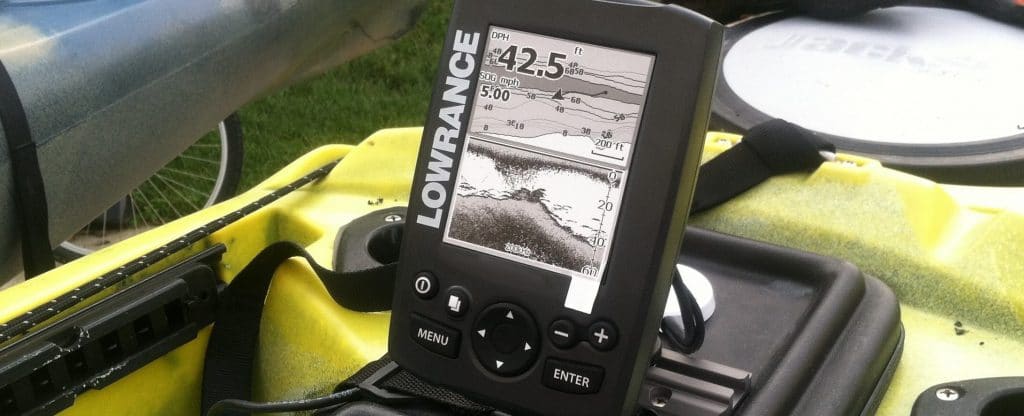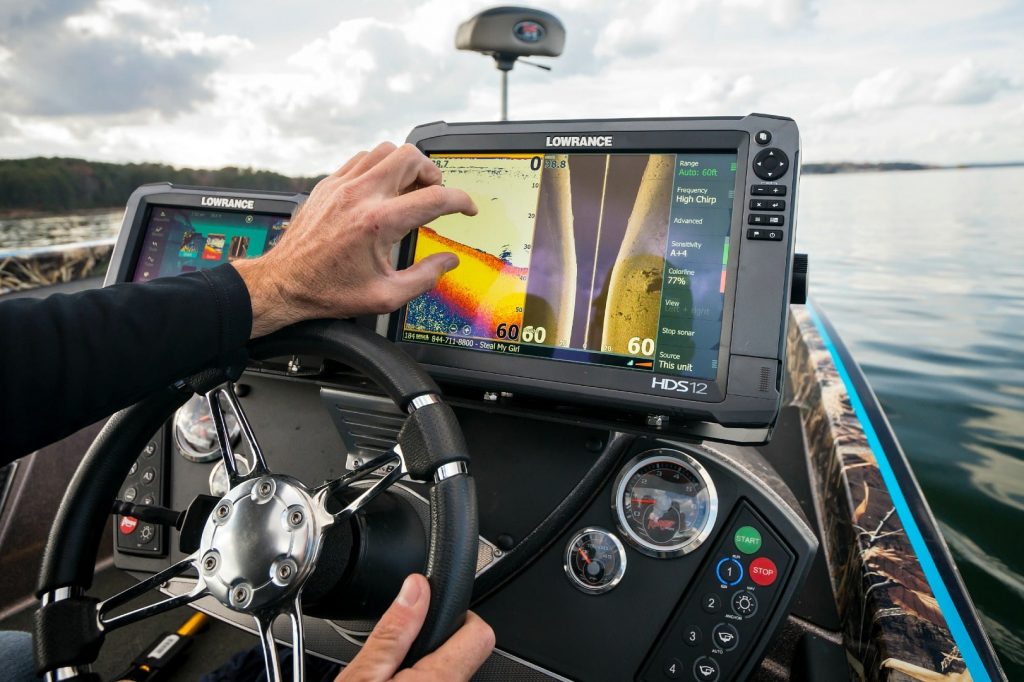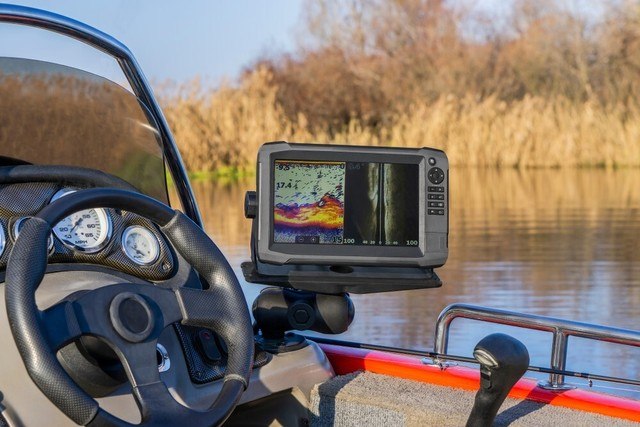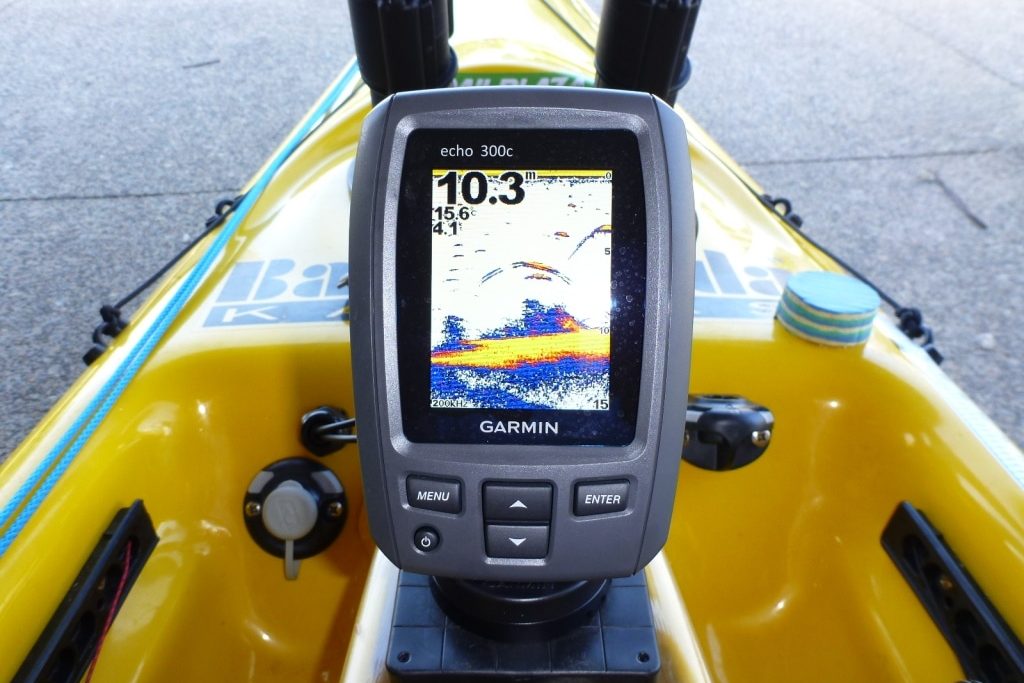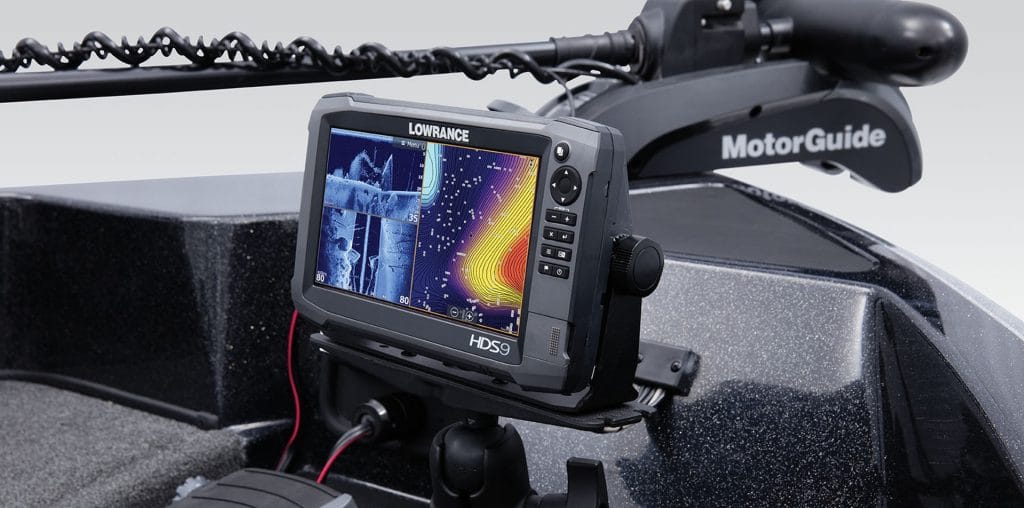

The first and most important step in fishing is knowing where to find fish. Without fish beneath your boat, it doesn’t matter how alluring the bait on your hook may be – you’ll end up reeling in an empty line. Thankfully, there is a wide diversity of fish finders available for anglers that can help you precisely locate your potential catch. These fish finders allow your side imaging sonar to display fish on a screen, and some even offer GPS functionality so that you can return to a fish-filled area in the future.
In order to help you find the best side imaging fish finder, we considered a number of features of these units. We looked first at the display, which needs to be large enough and crisp enough that you can clearly spot the dots that represent fish. We also looked at the types of sonar different fish finders use, which can impact how effective your fish finder is. The maximum depth and side reach are also important. With our Editor’s Choice, Lowrance HDS-7 Live, you can dramatically reduce the time you spend searching. Finally, we checked whether the fish finders have a GPS unit so you can return to your favorite spot in the future.
We spent tens of hours researching side imaging fish finders, poring over manufacturer’s technical specifications and reviews from experienced fishermen. The result is our pick of the five best side imaging fish finders, highlighted in the table below. Continue reading for detailed reviews of each fish finder as well as our buying guide, which covers everything you need to know about finding the perfect fish finder. Finally, we finish by summing up our three overall favorite side imaging fish finders on the market today.
More features: preloaded C-MAP US Enhanced mapping; compatible with C-MAP MAX-N+ charts, Navionics+ or Navionics Platinum charts; Wi-Fi and Bluetooth compatible
This capable fish finder from Lowrance is one of the best 7-inch side imaging fish finders available. The screen may be somewhat small, but it’s mighty – it has a crystal clear 1024 x 600 resolution that allows you to see every detail in the sonar signal with clarity. The only downside to the small screen size is that it’s easy to crowd the display. The HDS-7 Live allows you to place all three of the Active Imaging sonar screens on the display at once along with mapping displays, at which point each of the screens are quite small.
Users were extremely happy with the power of this unit, even though it is only rated for a maximum side reach of 150 feet. Within that range, the sonar signal is quite strong and the level of detail of fish is very impressive.
However, fishermen also would have liked to see a few upgrades given the high price of this unit. The preloaded C-MAP US package doesn’t offer the resolution or quality that most fishermen want, and upgrading to Navionics+ maps after-market can be prohibitively expensive. At the same time, users had trouble unlocking the GPS for use outside of the US – in part a problem with Lowrance’s customer service.
Still, the fish finder comes with a wide variety of features to explore, including Wi-Fi and Bluetooth connectivity. The dual core processor inside the unit is also incredibly fast, so there’s no delay when loading new screens as is common with many other fish finders.
More features: LED backlight, Humminbird Basemap cartography, AutoChart Live and LakeMaster compatible, built-in Bluetooth
If you’re looking to upgrade from an existing side imaging fish finder, or simply don’t have any limits on your budget, there’s no question that the Humminbird Helix 10 is the most powerful fish finder on the market right now. This fish finder features Humminbird’s new MEGA sonar system, which offers a 1,200 kHz frequency for ridiculously good imaging clarity in shallow waters. If you frequently fish in lakes that are less than about 50–100 feet deep, you won’t find a better sonar system.
Humminbird also equipped this fish finder with a massive 10.1-inch display in order to let you take advantage of that clarity. The 1024 x 600-pixel resolution blows the competition out of the water and lets you see even individual fish in complete detail.
The fish finder doesn’t come with mapping cards or a transducer, which adds to the already exorbitant price tag of this unit. But, it’s compatible with Lakemaster cards, and anglers will be glad to know it’s compatible with the SmartStrike mapping cards that are expected to hit markets soon. Users also really liked the AutoChart live function, which allows you to map the seafloor for up to eight hours continuously and then save that map to return to in the future.
The only thing missing from this fish finder is a traditional down-imaging CHIRP system. Unfortunately, it’s all side imaging sonar – you don’t get the depth or imaging directly below your boat of a traditional sonar system. The maximum side reach of just 200 feet is also somewhat limiting.
More features: LED backlight, Humminbird Basemap cartography, AutoChart Live, LakeMaster Compatible, Navionics Compatible, built-in Bluetooth
If you want to take advantage of Humminbird’s MEGA sonar system and AutoChart live functionality, but don’t have $2,000 or more to shell out for the Helix 10, the Helix 7 offers a budget-friendly alternative. In fact, this fish finder presents an excellent value for the price and can be a serious competitor to the Garmin unit.
The differences that fishermen care most about between this fish finder and the EchoMAP Plus is that this unit includes MEGA sonar and Dual Spectrum CHIRP, but it shrinks the side imaging range from 750 feet to just 125 feet. So, this fish finder is most suited for fishermen who want to have extreme clarity over a small, shallow area, rather than pretty good clarity over a wider area.
The display on this unit is also noticeably smaller, at just 7 inches. Users didn’t find this to be a problem, but it’s definitely not as spacious as the 9- or 10.1-inch displays on its more expensive competitors. Helpfully, Humminbird did build this display with an LED backlight so it’s ready to take on early morning fishing trips.
Like the Helix 10, this fish finder comes with AutoChart Live – a mapping feature that users who frequently fish in the same area absolutely love. It also offers Bluetooth so you can connect the fish finder to your phone.
While this is a relatively cheap side imaging fish finder, it’s important to note that you’ll need to spend extra on high-quality maps. As a result, this fish finder is significantly closer in price after upgrades to the Garmin unit than it appears at first.
More features: US/Canada Navionics+ preloaded maps, Autotuning sonar, SolarMAX display
This easy to use side imaging fish finder from Lowrance is a great unit for first-time sonar users. The fish finder comes with everything you need to get started, including a transducer that can fit onto any boat – including kayaks – and 1-foot contour maps for more than 4,000 lakes in the US and Canada.
What really sets this fish finder apart is that it automatically adjusts its settings to adapt to any fishing environment. The Autotuning function allows the sonar to update its Auto Depth scaling and frequency according to the characteristics of the water you’re in and the shape of the bottom. That way, you don’t have to spend 20 minutes fiddling with the settings every time you put into a new lake.
Even better, this fish finder is unique in offering three different frequencies – 200, 455, and 800 kHz – so that it can best match your environment. The 300 feet of side reach is also relatively impressive and offers plenty of view for the majority of fishermen.
Users also loved the display on this fish finder. The 9-inch screen is quite large and uncluttered, and the keypad is designed so that you can quickly access all of the features. The SolarMAX display was particularly nice for fishing on sunny days, and especially in open vessels like small boats and kayaks, since the display won’t develop a glare.
For the price, this side imaging fish finder offers quite a few features. While it lacks a touchscreen or wireless connectivity, it stands up quite well to more advanced and more costly units.
More features: Navionics Compatible, built-in Wi-Fi, built-in Garmin Quickdraw™ Contours mapping software, SailAssist features, Ethernet port
This fish finder from Garmin is easily the best side imaging fish finder for the money. The unit comes with an impressive 9-inch display that offers unparalleled 800 x 400-pixel resolution, allowing you to quickly spot small fish even at depth. One user reported being able to see a fish take his bait.
Users particularly liked the touchscreen and keypad combination of this display. The touchscreen makes it easy to zoom in on maps, drop a waypoint, or navigate the unit’s menus. But, when your hands are wet or cold, there’s always the keypad to fall back onto.
The ClearVü and SideVü sonar systems are highly effective – and importantly, offer a staggering 750 feet of side imaging capability. That puts this fish finder miles ahead of the competition when it comes to increasing your view of what fish are around your boat, which is most anglers’ goal in adding a side imaging fish finder in the first place.
The fish finder also has a number of nice add-on features, including Wi-Fi connectivity and built-in mapping software. You also get pre-loaded maps for most lakes in North America, which is around a $150 value in and of itself.
That said, this fish finder is decidedly biased towards freshwater fishermen. It doesn’t come with coastal maps preloaded for saltwater anglers.
Now that you’ve learned more about our five favorite side imaging fish finders, how do you decide which one of them is right for you? In our buying guide, we’ll explain why side imaging fish finders are a good choice and cover all of the features that you need to know about when choosing a fish finder.
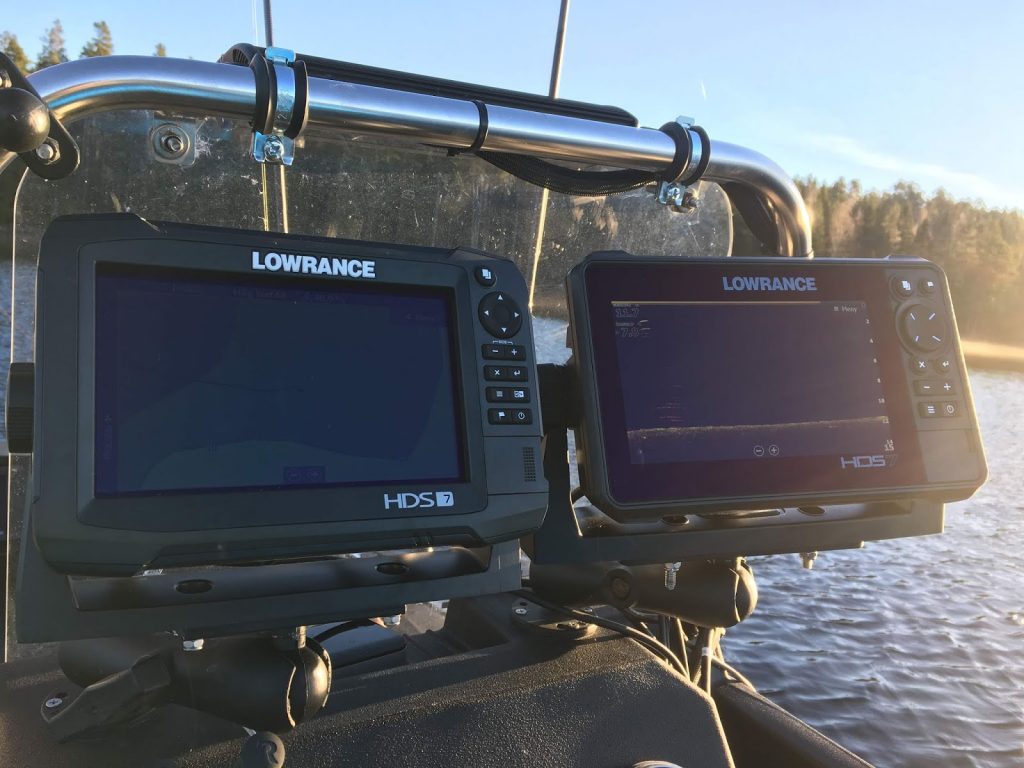
Side imaging sonar has a number of advantages for fishermen. First, you get a significantly wider area of coverage with your dual beams, which allows you to detect fish in a greater radius away from your boat.
Because side imaging sonar beams are razor-thin, you can see features on the bottom, fish, and even wreckage below the water in extremely clear detail.
Best of all, fish are easy to identify with side imaging sonar. Whenever there is a fish in the water column, it has two imprints on the sonar display. The first is the fish itself, which appears as a bright white outline. Immediately behind that will be a darkened shadow, which is the sonar shadow caused by the fish intercepting your sonar beam. This double imprint created by fish and side imaging sonar makes it easy to find fish as you are slowly drifting through an area.
Side imaging fish finders all use the same basic technology, but that doesn’t mean they’re all the same. Different fish finders offer a wide variety of different features that can affect how you’ll be able to fish. Here, we’ll take a look at the important features you need to know about.
A fish finder may be able to find the fish, but if you can’t see them on the display then it’s hardly doing its job. When choosing a fish finder, look for a model with a wide display and a high resolution.
A larger display size – like the 10.1-inch display found on the Humminbird Helix 10 unit – allows each dot representing a fish to be larger so you can see it more easily. Of course, high resolution is also important, so that individual fish in a bunch are displayed clearly rather than as a blurry cloud of dots.
Also, while all of the displays that we reviewed offer color, that’s not the case with every fish finder. Color is important because it can help you distinguish different features and make it easier to take in the information on the display.
The type of sonar that your side imaging fish finder uses plays a huge role in how clear your image of the water column and fish will be, especially as you move into deeper water. Traditional CHIRP sonar systems have a maximum frequency of 800 kHz, which is good enough for most fishermen fishing down to several hundred feet. But, Humminbird recently introduced MEGA side imaging, which expands the frequency of side imaging sonar up to 1,200 kHz. For fishermen who are trying to fish in shallow water or targeting fish near the surface, MEGA sonar systems offer unparalleled clarity.
Fishing at different depths requires different sonar frequencies. If you’re looking for fish in shallow water, you’ll need to use high frequencies in the 800–1,200 kHz range, while fishing in deeper water will require frequencies in the range of 255–400 kHz.
Most fish finders allow you to switch between a high and low frequency so that it can work for fishing both shallow and deep water. But if you fish in a wide variety of locations with different water depths, having a fish finder like the Lowrance HOOK2 9 model that switches between three frequencies can be extremely helpful.
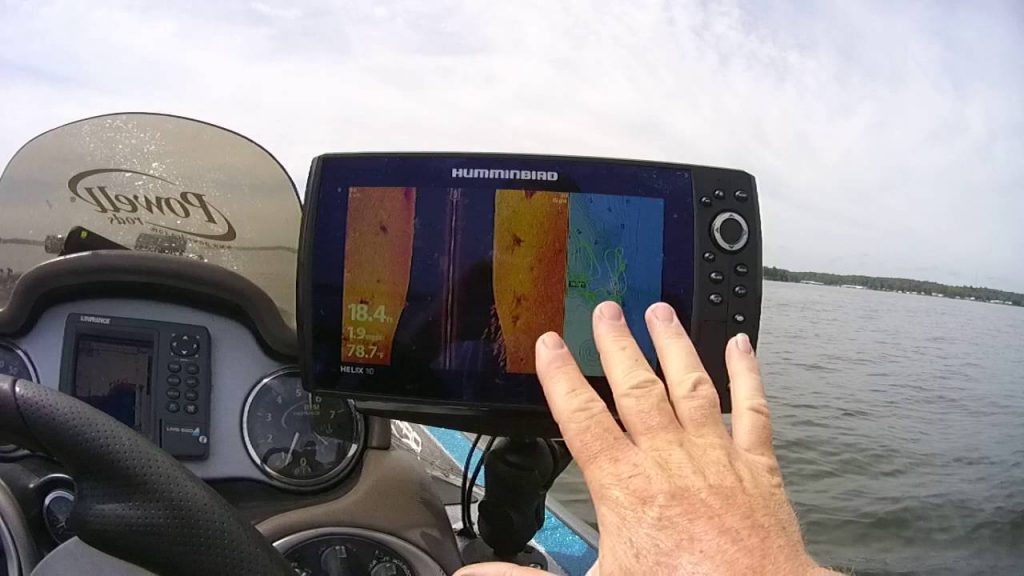
Note that these side imaging distances are maximum estimates – in the real world, when waves and silt are involved, your side imaging distance is likely to be far shorter. Saltwater, too, can reduce the imaging distance of your fish finder.
Importantly, the maximum depth of your side imaging fish finder will also depend on the type of water you’re fishing in. In freshwater, many fish finders offer clarity up to 2,000 feet below the surface, while that can be reduced to just 1,000 feet below the surface in saltwater.
The transducer is the part of your side imaging fish finder that actually emits sonar signals and allows the fish finder to relay signals from the water up to the display. If the transducer isn’t working properly or placed properly on your boat, you won’t get reliable information about the location of fish on your display.
Suffice it to say that a transducer is an absolutely essential part of every fish finder. All of the fish finders we reviewed except for the Humminbird Helix 10 come with transducers – for that unit, you’ll need to plan on spending extra to buy a transducer separately.
Most side imaging fish finders aren’t given waterproof ratings, which is somewhat surprising given that they’re meant to be surrounded by water on your boat. The majority of fish finders are water resistant enough to handle spray from your boat, but they are sensitive electronics – don’t expect them to keep working flawlessly if they get splashed with an enormous wave or left out in the rain. It’s important to keep your fish finder in a part of your boat that is relatively protected from the waves and weather, and to cover it or take it off your boat in between uses.
All of the side imaging fish finders we reviewed come with one- to two-year warranties from the manufacturers. Unfortunately, you’ll have to dig relatively deep to find the warranty information for the fish finder you’re interested in – manufacturers do not make this information easily available.
When in doubt, ask the manufacturer to specify what their warranty policy does and does not cover.
Many fish finders come with a variety of extra features to help them stand out from the competition and to offer more value to fishermen. One of the most common features is pre-loaded maps, which can be extremely useful if you want to use your fish finder as a GPS unit or to mark some of your favorite fishing locales. This is also a major added value, as marine maps can be expensive after-market.
Bluetooth connectivity to link your smartphone to your fish finder is an added feature found on the Humminbird fish finders and the Lowrance HDS-7 model, while the Garmin and HDS-7 fish finders offer Wi-Fi compatibility.
Another nice feature, included on the Humminbird fish finders, is an LED backlight. If you plan to be out fishing early in the morning or late into the evening, this can make the display much easier to see.
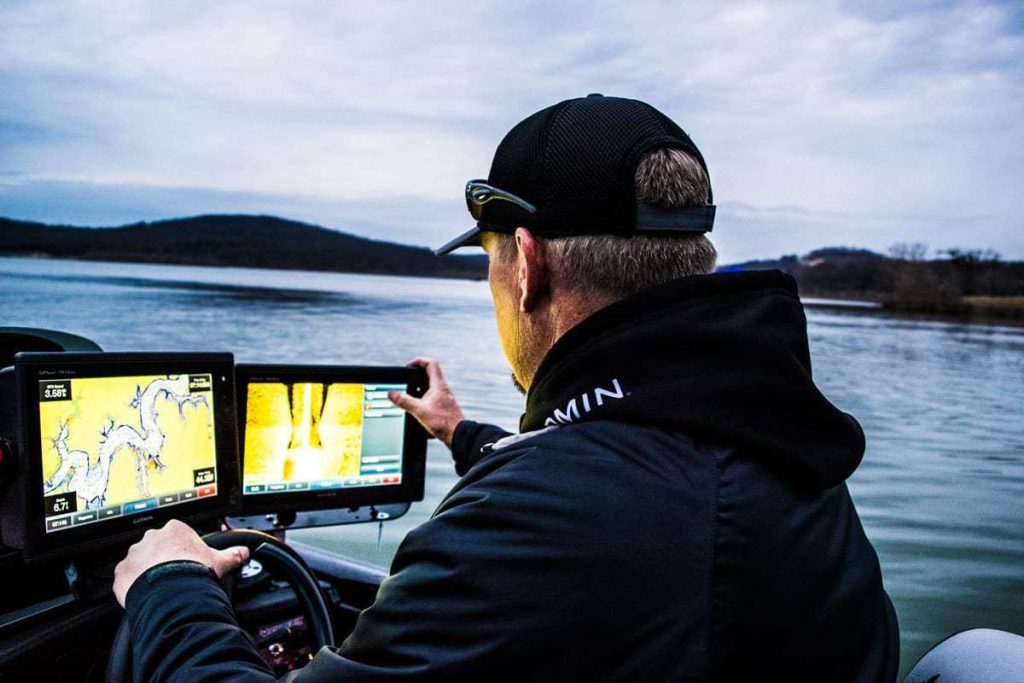
Once your fish finder and the transducer are mounted on your boat, you’re ready to begin fishing with your fish finder. It’s a good idea to leave as many settings on auto as possible when first starting out, including the Auto Depth function. You can, however, play around with the frequency – you should set your fish finder to the higher available frequency when fishing in shallow water less than 50 feet, and to the lower available frequency when fishing in deeper water.
It’s a good idea to play around with the Fish ID function on your fish finder when you’re just starting out. That makes it much easier to learn what dots in your fish finder display are actually fish, and what is just noise or rocks on the seafloor. Once you’ve gotten more experience with your fish finder, you can try turning Fish ID off and adjust the Auto Depth function to eliminate the uppermost part of the water column from your display.
Our three overall favorite side imaging fish finders on the market today are the Lowrance HDS-7 Live, the Humminbird Helix 10, and the Humminbird Helix 7.
Both of the Humminbird Helix fish finders are built with Humminbird’s MEGA side imaging sonar technology, which expands the shallow-water frequency up to 1,200 kHz for unparalleled clarity. The Helix 7 is a budget-friendly fish finder for anglers who want to take advantage of this technology and don’t mind a small display or the lack of preloaded maps. The Helix 10 is more than twice the price, which makes it most suitable for more experienced fishermen who are looking to upgrade an existing fish finder. However, it offers a massive 10.1-inch display and the popular AutoChart Live mapping feature.
We feel that the Lowrance HDS-7 Live is the overall best side imaging fish finder because it blends quality and price. It comes with a wide variety of features to explore, including Wi-Fi and Bluetooth connectivity. The dual-core processor inside the unit is also incredibly fast, so there’s no delay when loading new screens as is common with many other fish finders.

